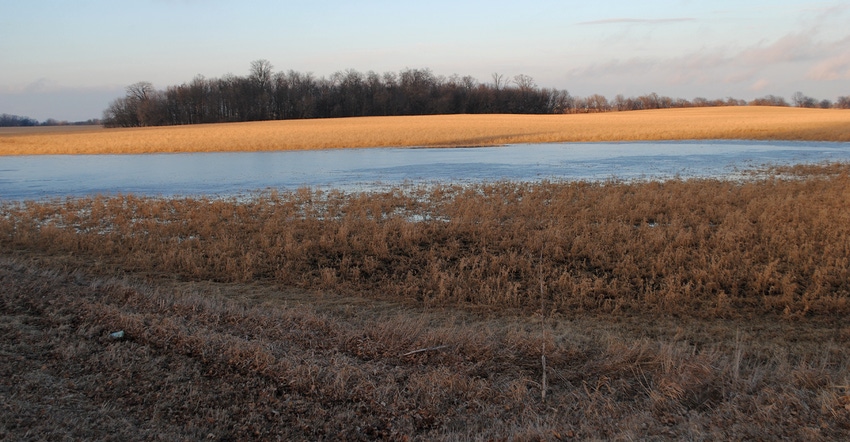February 25, 2020

To say that 2019 was stressful on Wisconsin alfalfa fields would be the understatement of the century. Remember those old public service announcements that ran in the late 1980s that asked parents the chilling question: “It’s 10 p.m. Do you know where your children are?” Wow, times have really changed, right? Maybe, maybe not.
If you raise alfalfa, the question you need to ask this spring is, “It’s April. Do you know where your alfalfa is?” The answer for many will be, “The seed is still in the bag” — intended for new-seeding acres to replace those that were lost. However, the answer for established fields is, “I hope the alfalfa is still in the field where I left it last year,” right?
Any reasonable parent would quietly peek through the bedroom door to confirm there is someone under the covers without disturbing their child’s slumber. What if that child had caught a cold recently, or had a bad habit of staying up late and not going to bed? You might not just look from a distance, but instead would peel those covers back to assess if the situation was improving or deteriorating.
It was a similar curiosity that led me to visit several alfalfa fields this winter. My survey revealed that for the most part, most of our established alfalfa stands (the adults) decided it was time to call it a season and take a long winter nap. The “kids,” however, had a different idea. Many new-seeding fields established in late-summer 2019 never went fully dormant.
I have often used the following analogy: If you go outside in the cold without a jacket, do you get sick? Maybe, maybe not. If you go outside in the cold without a jacket and only eat one meal instead of three, do you get sick? Maybe, maybe not. If you go outside in the cold without a jacket, with only one meal, and with no sleep, do you get sick? I think you get the point. It is often not one stressor, but multiple stressors when applied simultaneously that result in poor performance — in both plants and people.
Be patient
Evaluating your alfalfa fields too early or too late may result in hasty decisions. I have seen alfalfa stands that looked near death in April only to recover in May; however, the opposite is also true. Fields that appeared OK in April later were rotated.
The University of Wisconsin recommends that measurements of 55 stems per square foot across a field should provide full yield potential in an established alfalfa stand. For more information, read Evaluating and Managing Alfalfa Stands for Winter Injury and Assessing Alfalfa Stands.
The National Oceanic and Atmospheric Administration models for April suggest we have an increased probability of receiving above-normal precipitation and cooler-than-normal temperatures at the same time early this spring.
New-seeding acreage is expected to be high again this spring. While you have no ability to control what Mother Nature has in store for established stands, you need to carefully plan for and evaluate the fields you expect to seed down in 2020. Revisiting the fundamentals of establishing alfalfa in a low-forage carryover year is essential.
1. Alfalfa does not like wet feet. The seed industry has made significant advancements in improving alfalfa’s resistance to multiple races of aphanomyces, pythium, phytophthora and other diseases. However, fields lacking adequate tile drainage may have carryover compaction, limiting a newly planted stand’s long-term yield potential.
2. Soil pH matters, and 6.8 is ideal. When pH is less than 6.5 at the time of germination, the plant’s ability to fix nitrogen from newly developing nodules is limited. Conversely, when soil pH increases through the mid-7s toward 8.0, plant uptake of sulfur, iron and manganese may be impacted.
3. Manage nutrition. Fertilizer and nutrient recommendations should be based on soil test results from a University of Wisconsin-approved soil analysis laboratory. Follow the 4 R’s: right rate, right source, right placement and right timing.
Additional information on alfalfa establishment may be found at UW-Extension’s The Learning Store.
Jarek is the Extension crops and soils agent in Outagamie County, Wis.
About the Author(s)
You May Also Like




